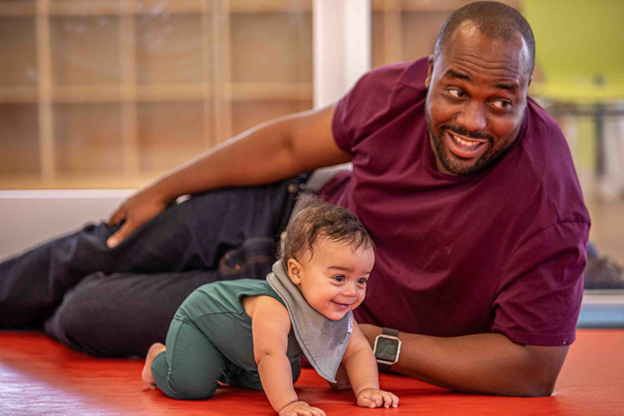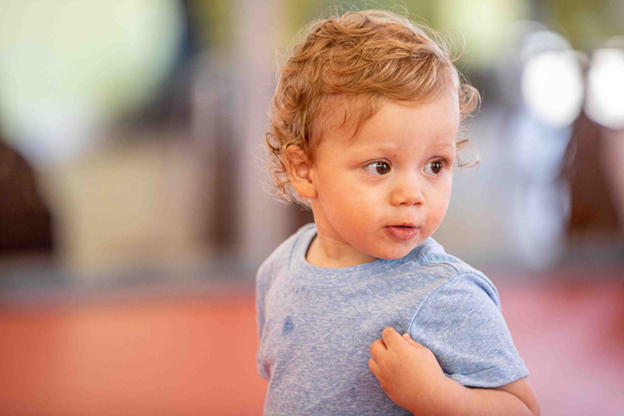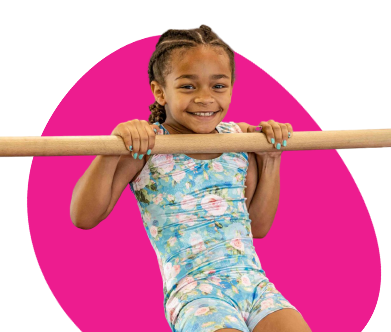As parents, we are constantly seeking opportunities to nurture and support our baby’s growth, and baby exercise classes provide an exciting avenue for encouraging physical, cognitive, and social development from an early age.
If you’ve been considering infant exercise classes but are still wondering if they’ll be worthwhile for your little one’s development, here is what you need to know.

Why You Should Consider Baby Exercise Classes?
While you could exercise with your infant at home or speak to a pediatric physical therapist about the most appropriate movements for your little one, infant exercise classes offer so much more.

Here are some of the ways that you and your little one will benefit from attending parent-child classes at The Little Gym:
Promotes Physical Development
Infant exercise classes provide opportunities for babies to engage in age-appropriate activities that promote the development of gross motor skills, strength, balance, and coordination. Activities such as tummy time, rolling, crawling, reaching, and learning how to keep their legs straight help babies develop important physical abilities.
Enhances Cognitive Development
Movement-based activities in our Bugs classes stimulate cognitive development by encouraging babies to explore their environment and problem-solve. Engaging in movement and play naturally boosts brain development and lays the foundation for future learning.
Encourages Socialization and Bonding
Infant exercise classes offer a structured environment for babies to interact with other infants and caregivers.
Socialization at a young age helps babies develop social skills such as sharing, taking turns, and cooperating. It also provides opportunities for parents to connect with other families and build a support network.
Participating in exercise classes with your baby at The Little Gym also strengthens your bond through shared experiences, physical closeness, and positive interactions.

Sensory Stimulation
Baby exercise classes such as Bugs classes offered at The Little Gym incorporate sensory experiences such as music, lights, textures, and movement, which stimulate babies’ senses and promote sensory integration. Sensory stimulation is essential for brain development and helps babies make sense of the world around them.
Enhances Mood and Energy Levels
Physical activity releases endorphins, which are natural mood lifters, for both babies and parents. Parent/Child classes provide an opportunity for babies to expend energy, improve sleep patterns, and enhance their mood and emotional well-being.
And, when your baby is happy, mom and dad are happier too!
Types of Baby Exercises: What to Expect
There are so many different types of activities your little one will be exposed to during a Parent/Child class, but here are some of the most common types of baby exercises you can look forward to:

- Baby Neck Strengthening Exercises: These exercises focus on strengthening the muscles in your baby’s neck, which are crucial for helping them better control their head. One example of a neck strengthening exercise is gently encouraging your baby to lift and turn their head while lying on their back. And, naturally, tummy time is another great way to strengthen baby’s neck muscles.
- Crawling Preparation Activities: Getting your baby into the hands and knees position encourages them to start exploring crawling movements. Instructors will guide parents on how to support their baby in this position and encourage them to rock back and forth or reach for objects. This helps strengthen your little one’s arms, shoulders, and core muscles, preparing them for crawling.
- Head Control Exercises: Exercises that focus on head control are essential for babies, especially in the early months. These exercises often involve gently supporting your baby’s head while encouraging them to lift and turn it in different directions. This helps develop the neck and shoulder muscles and improves your child’s ability to hold their head up independently.

- Knees Bent Activities: Encouraging knee bends with a baby lying on their back or in a supported sitting position helps strengthen the leg muscles and prepares little ones for crawling and eventually walking. To do this, you will gently guide your baby’s legs through movements, such as bringing their knees towards their chest or kicking their legs.
- Sitting Position Exercises: Sitting independently is a major milestone for babies, and exercises that promote core strength and balance are essential for achieving this skill. During class, parents may support their babies in a sitting position while encouraging them to reach for a soft toy or object. This helps strengthen their core muscles and improves their balance and stability.
- Hand Eye Coordination Activities: As your baby starts grasping, they are also improving their hand eye coordination. Reaching and grasping exercises are often used in class to develop this essential skill. Your little one will usually start out with larger, soft toys before moving on to items that are slightly harder to grasp.
Encouraging Baby to Exercise: Tips for Parents
Every parent wants to see their child roll and gain full head control, but how can you get your little one more interested in movement and exercise?

Here are some tips to help you engage your little one in physical activity:
- Lead by Example: Babies learn by observing and imitating their caregivers. Incorporate physical activity into your daily routine and demonstrate enthusiasm for exercise. Your baby will be more likely to join in if they see you enjoying it too.
- Make it Fun: Infuse exercise with playfulness and joy to capture your baby’s interest. Use colorful toys, music, and games to make exercise sessions enjoyable and engaging. Incorporate silly movements, funny faces, and playful interactions to keep your baby entertained.
- Choose Age-Appropriate Activities: Select activities that are suitable for your baby’s age and developmental stage. For young babies, focus on activities that encourage reaching, stretching, and kicking. As your baby grows older, incorporate activities that promote crawling, rolling, standing, and walking. Our Bugs classes are a great starting point!
- Use Props and Toys: Introduce props and toys that encourage movement and exploration. Soft balls, tunnels, mats, and climbing structures can provide stimulating environments for active play. Incorporate toys that encourage reaching, grasping, and pushing to engage your baby’s motor skills.

- Create Variety: Keep exercise sessions interesting by introducing a variety of activities and environments. Rotate between different types of activities, such as tummy time, floor play, outdoor play, and interactive games. Changing scenery and incorporating new challenges can help keep your baby engaged and excited about exercise.
- Encourage Social Interaction: Exercise can be even more enjoyable when shared with others. Arrange playdates with other babies or join parent-child exercise classes at The Little Gym where babies can interact and play together. Social interaction adds an extra layer of excitement and motivation for your baby.
- Follow Your Baby’s Lead: Pay attention to your baby’s cues and preferences when it comes to exercise. If your baby seems particularly interested in a certain activity or movement, follow their lead and build on their interests.
- Make it a Daily Habit: Establish a regular routine of exercise and physical activity. Aim for short, frequent sessions throughout the day rather than long, exhausting workouts. Consistency is key to developing healthy habits and fostering a positive attitude towards exercise.
Ready to get your little one moving with the support of qualified coaches and caregivers who are passionate about early childhood development? Find a Bugs class near you.

